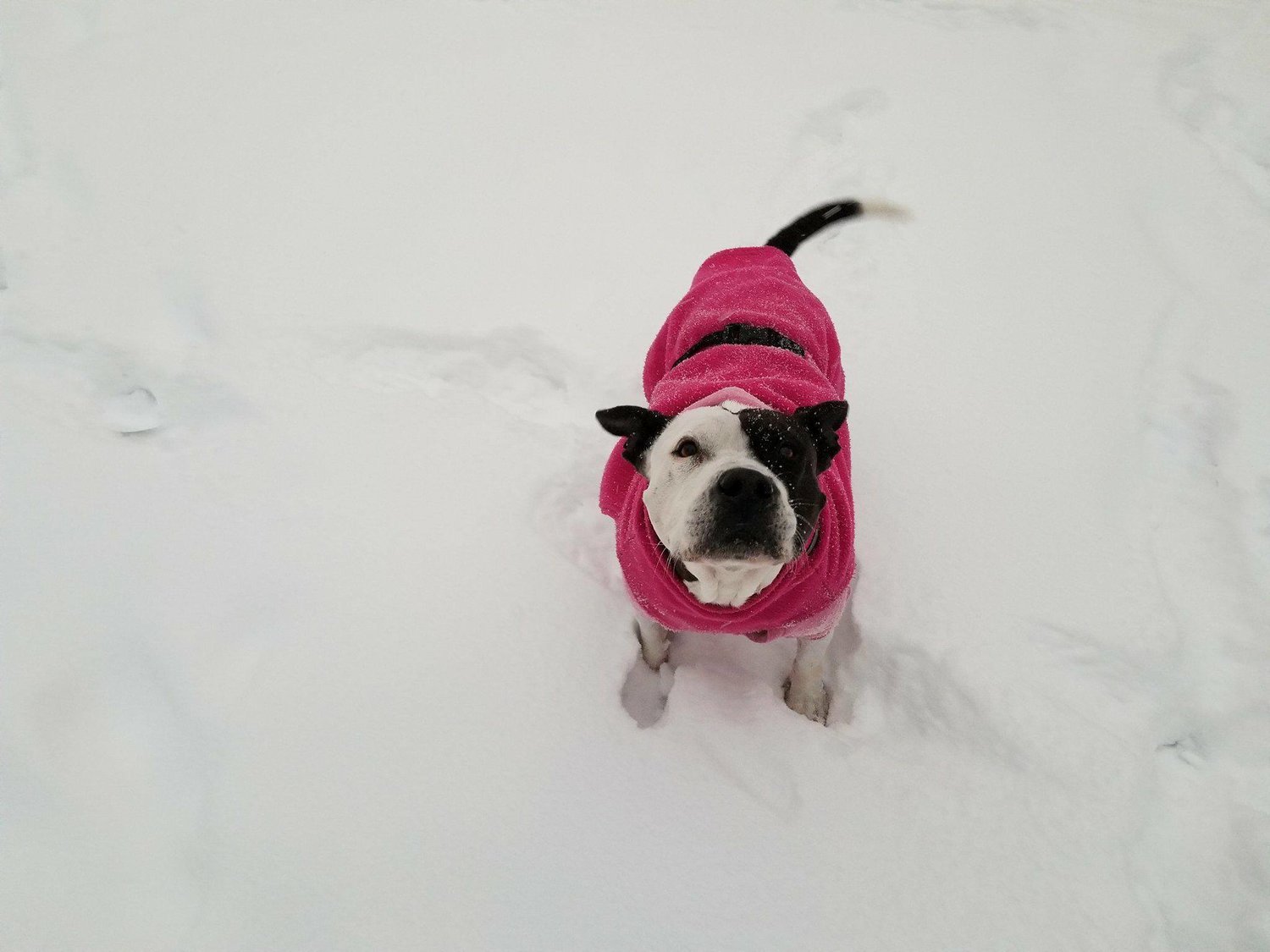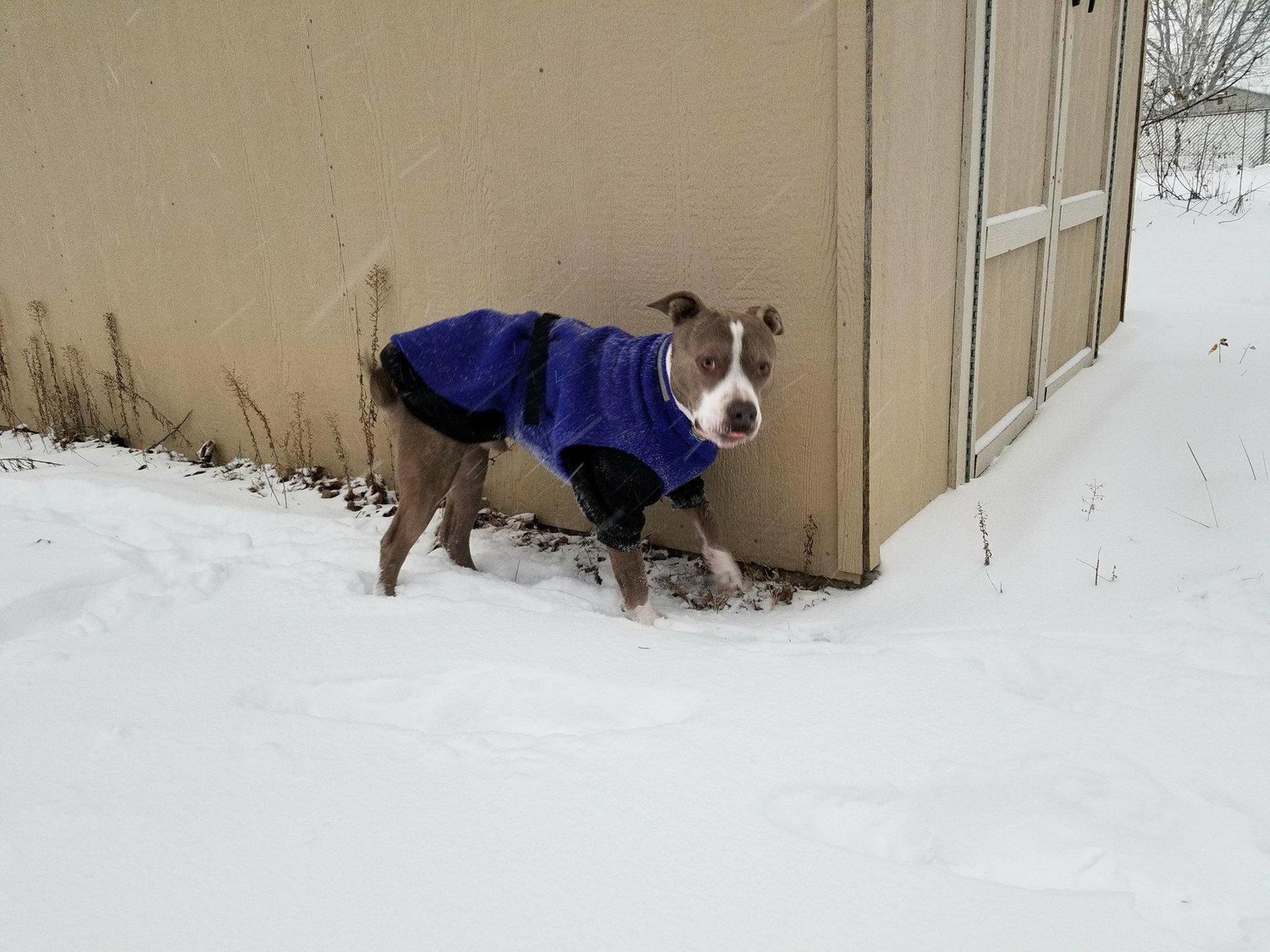
Cold Weather Care
Keeping Your Furry Friends Cozy and Safe
As the chilly winds sweep through Detroit, it's essential to ensure that our four-legged companions stay warm and comfortable. While we bundle in warm coats and insulated boots to hold back winter, it is important to remember that cats and dogs feel the effects of the cold and inclement weather just as we do. Cold weather poses unique challenges for dogs and cats, and with a few simple precautions, you can keep your pets safe and happy during the winter months. Here's a guide to cold weather care for dogs and cats in Detroit.
Bring Them Indoors
Friends of Detroit Animal Care and Control advocates for companion pets to be kept indoors year-round, but especially during cold weather. You wouldn’t keep your best friend outside, would you?
Make sure your companion animal has a warm place to sleep far away from all drafts and off the floor, such as in a dog bed, cat bed, or basket with a warm blanket or pillow in it.
Provide Adequate Shelter for Outdoor Pets
If you leave your pet outdoors for any length of time, you are required by Michigan state law to provide them with fresh (not frozen) water, food, and an appropriate shelter, which can make the difference between life and death for outside pets.
Cats should be kept indoors or at least brought into a warm, animal-proofed garage or shed during severe weather.
For dogs, appropriate shelter means:
The doghouse should be well-built, insulated, and have a slanted roof.
The interior should be just large enough for the animal to stand, turn-around, and to lie down comfortably.
It should be slightly elevated from the ground for air circulation.
The door should face away from prevailing winds and have a protective flap to eliminate drafts.
The shelter must have a thick bed of fresh, dry straw for bedding and insulation.
Do not use blankets, towels, or rugs; they will get wet and freeze, and will provide no protection.
To report pets left outside without proper shelter in Detroit, call the Detroit Animal Control Hotline at:
313-922-DOGS (3647)
How Cold is Too Cold?
The best way to monitor pets when it’s cold is to keep a close eye on their behavior. Be vigilant for signs of cold stress, including shivering, lethargy, and difficulty moving. If you notice any of these signs, bring your pet indoors immediately.
At 45°F, most pets are safe and comfortable.
Below 45°F, cats, puppies, small dogs, dogs with thin or single-layer coats (like bully breeds), and old or sicks dogs should be outdoors for only a limited time. Dogs with single-layer coats should wear a coat with a high collar or turtleneck that covers the dog from the base of its tail on top and to the belly underneath.
Once the temperature drops under 20°F, most animals are at risk for frost bite and hypothermia and should spend just enough time outdoors to relieve themselves. Dogs with thick double or triple-layer coats who are bred for the cold, such as huskies and Alaskan malamutes, can tolerate temperature as low as 0°F for short periods of time.
Consider Special Safety Precautions for Cold Weather
Thoroughly wipe off your pet’s legs and stomach when it comes in out of the rain, snow, or ice. Pay special attention to the sensitive paw pads, which may bleed from snow or ice encrusted in them.
Never leave your pet alone in a vehicle during the cold weather, as the car or truck can act like a refrigerator, holding in the cold, with the potential of your animal freezing to death.
Don’t let your pet off leash on snow or ice, especially during a snowstorm. They frequently lose their scent in snow and ice and can easily become lost. More pets are lost during the winter than during any other season!
Puppies have not developed a tolerance for the cold as well as adult dogs and may be difficult to housebreak during the winter. If it is necessary, paper-train your puppy inside until it appears to be acclimated to the weather.
If your pet spends a lot of time engaged in outdoor activities, increase its supply of food, particularly protein, by 10-20%.
Antifreeze, even in very small doses, is a lethal poison for dogs and cats, and because of its sweet taste, animals are attracted to it. Be sure to thoroughly clean up any spills from your vehicle. To prevent accidental poisonings, animal-friendly products with safer ingredients are suggested. Contact your veterinarian or the National Animal Poison Control Center (ASPCA/NAPCC) immediately if you suspect your animal has been poisoned.
Never shave your pet down to the skin in the winter. Leave the coat in a longer style, which provides more warmth. Remember that such a style will require more frequent brushing due to dry winter air and static electricity. If you bathe your pet, make sure it is completely dry before you take it outside.
Make Special Considerations for Cats
Keep cats inside! Cats have a very difficult time outdoors, where they are susceptible to frostbite and freezing.
During the winter, outdoor cats sometimes choose to sleep under the hoods of vehicles, where it is warmer. When the motor is started, the cat can be injured or killed in the fan belt. To prevent this, bang loudly on the hood of your vehicle and wait a few seconds before starting the engine, to startle the cat and give it a chance to move along.
If you have outdoor kitties or just want to provide shelter for the stray cats in your neighborhood, you can make cozy shelters for them. This video shows how to make cat shelters out of materials easily found at big box stores or online.
Step-by-step instructions and demonstration of how to make shelters for outdoor cats with common materials and tools.



